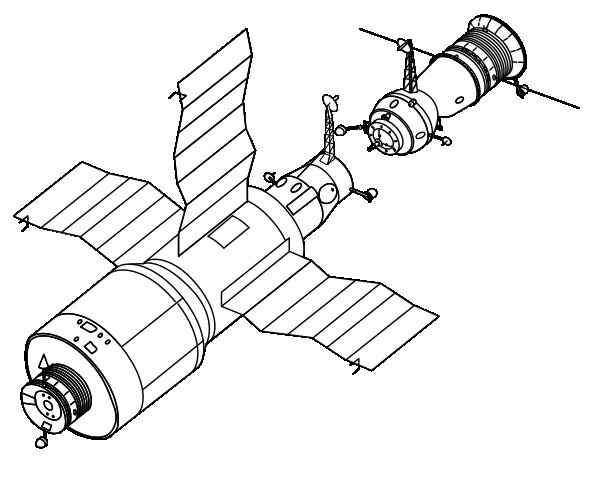
Salyut 4
Status - De-Orbited
Details
Salyut 4 represented the second phase of DOS civilian space station. Although the basic design of Salyut 1 was retained, it switched to three large solar panels mounted on the forward module rather than its predecessor's four small panels on the docking module and engine compartment, presumably to generate more power. It had an interior floor area of 34.8 sq. The pitch of the station was 2 X 59 N, yaw was 2 X 59 N and roll was 2 X 20 N. The electric System produced an average of 2.00 kW of power. It had 2,000 kg of scientific equipment alongside two sets of three solar panels each and was equipped with the Delta Navigation System which was a new autonomous navigation system that calculates orbital elements without assistance from ground. It was powered by KTDU-66 thrusters. Instrumentation
Agencies
Russian Federal Space Agency (ROSCOSMOS)
Government
Administrator: Yuri Borisov
RFSA 1992The Roscosmos State Corporation for Space Activities, commonly known as Roscosmos, is the governmental body responsible for the space science program of the Russian Federation and general aerospace research. Soyuz has many launch locations the Russian sites are Baikonur, Plesetsk and Vostochny however Ariane also purchases the vehicle and launches it from French Guiana.
Long March 3B/E
Fengyun-4C
Launch Complex 2 (LC-2) - Xichang Satellite Launch Center, People's Republic of ChinaChina's geostationary meteorological satellite program FY-4 (Feng Yun 4) is the second generation of chinese geostationary meteorological satellites.
Long March 8A
SatNet LEO Group 17
Commercial LC-1 - Wenchang Space Launch Site, People's Republic of ChinaA batch of 9 Low Earth Orbit communication satellites for the Chinese state owned SatNet constellation operated by the China Satellite Network Group.…
Soyuz 2.1a
Obzor-R No.1
43/4 (43R) - Plesetsk Cosmodrome, Russian FederationNote: Assignment of payloads to this launch is uncertain. The Russian Obzor-R satellite is a planned X-band radar earth observation satellite desi…
LVM-3 (GSLV Mk III)
BlueBird Block 2 #1
Satish Dhawan Space Centre Second Launch Pad - Satish Dhawan Space Centre, IndiaAST SpaceMobile’s Block 2 BlueBird satellites are designed to deliver up to 10 times the bandwidth capacity of the BlueBird Block 1 satellites, requi…
Long March 12A
Demo Flight
Long March 12A Pad - Jiuquan Satellite Launch Center, People's Republic of ChinaFirst test launch of CASC/SAST’s Long March 12A rocket, with a dummy payload. The rocket’s 1st stage attempted to land on a landing pad about 300 km …

